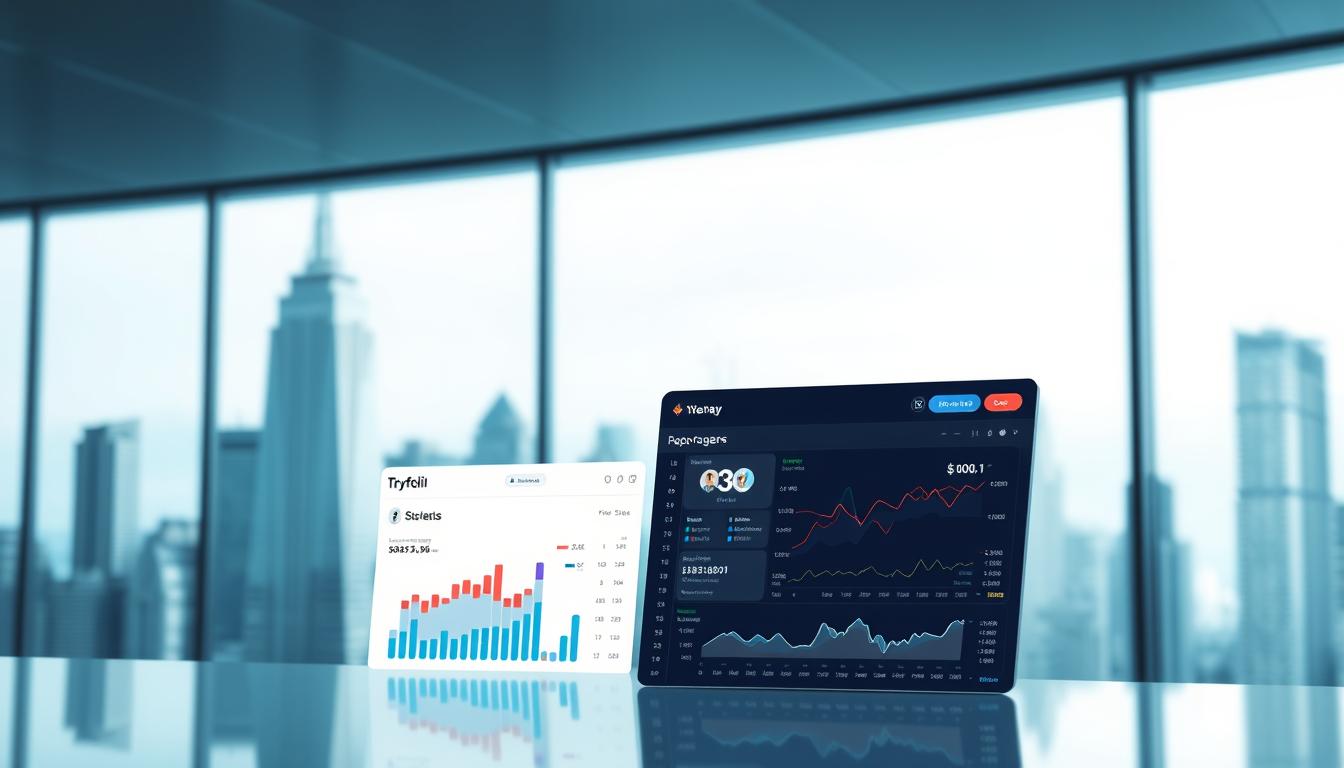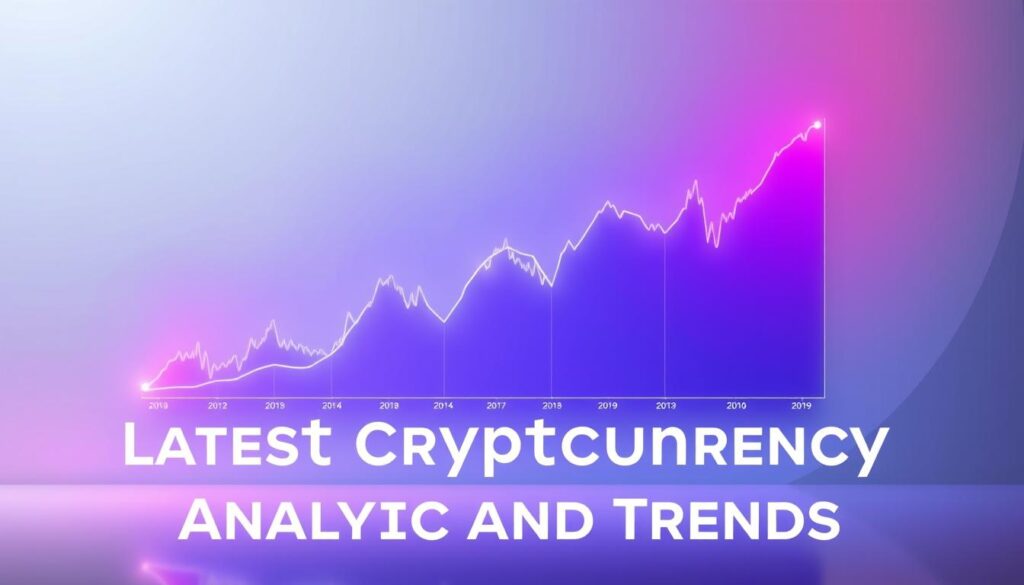Now Reading: Complete Crypto Portfolio Builder Calculator 2026 Interactive Tool
- 01
Complete Crypto Portfolio Builder Calculator 2026 Interactive Tool
Complete Crypto Portfolio Builder Calculator 2026 Interactive Tool

The digital asset landscape has exploded in complexity. Modern investors juggle holdings across numerous exchanges, DeFi protocols, and NFT collections. Tracking this diverse ecosystem with basic spreadsheets is no longer practical.
This guide explores a sophisticated new category of management software. These platforms are designed for the demands of today’s market. They offer real-time tracking and powerful analytics for all your digital assets.
The evolution of these tools mirrors the growth of the asset class itself. Accurate tracking and smart diversification are now essential for achieving optimal returns. Both individual and institutional participants require professional-grade solutions.
Advanced calculators integrate artificial intelligence and multi-chain support. They provide a clear, unified view of your entire investment performance. This addresses critical needs like tax reporting and risk management that older methods cannot handle.
Adopting this technology represents a fundamental shift in strategy. Investors move from reactive tracking to proactive optimization. Understanding the features of different tools empowers you to select the right solution for your goals.
Key Takeaways
- Modern digital asset management requires tools that go beyond simple spreadsheets.
- The growth of the market has made accurate tracking and diversification essential.
- New platforms integrate AI and multi-chain capabilities for comprehensive visibility.
- These tools solve complex problems like tax compliance and risk assessment.
- Using professional software enables a shift from passive tracking to active strategy optimization.
- Selecting the right tool depends on your trading volume and asset diversity.
Introduction to Crypto Portfolio Management in 2026
Modern wealth management now encompasses a diverse array of digital investment vehicles that require specialized tracking methods. The financial industry has entered an era defined by automation and artificial intelligence.
Understanding the Evolution of Digital Assets
Digital assets have transformed from simple Bitcoin holdings to complex ecosystems. According to CoinMarketCap, the global market capitalization reached $3.59 trillion. This growth reflects the expansion into DeFi protocols, NFTs, and multi-chain investments.
Ten years ago, retail participants used basic spreadsheets for tracking. This approach worked when holdings were limited to one or two tokens on a single platform. Today’s diversification makes manual methods impractical.
Why Investors Need Interactive Tools
Market participants face unprecedented challenges in 2026. They must track staking rewards, monitor liquidity pools, and reconcile cross-chain transfers. Manual calculation of tax obligations across thousands of transactions becomes overwhelming.
Sophisticated tools provide real-time visibility into performance metrics. They offer automated transaction reconciliation and integrated compliance reporting. This addresses critical needs that older methods cannot handle effectively.
| Aspect | Traditional Spreadsheet Method | Modern Management System |
|---|---|---|
| Transaction Tracking | Manual entry with high error risk | Automated synchronization across platforms |
| Tax Calculation | Time-consuming manual processes | Integrated compliance reporting |
| Multi-Asset Support | Limited to basic token tracking | Comprehensive DeFi, NFT, staking coverage |
| Real-Time Updates | Delayed manual updates | Instant portfolio performance visibility |
Without proper management systems, individuals risk inaccurate profit calculations. They may miss tax obligations or make poor strategic decisions. Professional tools enable informed decision-making based on complete, current information.
The Emergence of Digital Asset Management Platforms
A fundamental shift occurred when investors began accumulating assets across exchanges, DeFi protocols, and personal wallets simultaneously. This new reality made old tracking methods ineffective. Specialized software was the necessary response.
Consider a typical mid-level investor. They might hold Bitcoin on Binance, stablecoins on Aave, NFTs on OpenSea, and MATIC on a Ledger wallet. Manually tracking this is a huge task. The volume of transactions, staking rewards, and cross-chain movements creates a bottomless to-do list.
Transition from Spreadsheets to Automated Systems
Early attempts using spreadsheets like Excel often failed. They struggle with complex tasks like tracking cross-chain movements or calculating cost basis across many purchases. Accounting for staking rewards or reconciling transfers is nearly impossible without errors.
Automated platforms solve these problems. They sync continuously with exchanges, wallets, and blockchains. This maintains accurate, real-time data without manual entry. These systems provide a unified dashboard showing your entire net worth and performance.
| Tracking Aspect | Manual Spreadsheet | Automated Platform |
|---|---|---|
| Data Accuracy | High risk of human error | Consistent, automated precision |
| Time Investment | Hours of manual reconciliation | Instant, continuous updates |
| Error Prevention | Prone to double-counting and omissions | Eliminates common calculation mistakes |
| Scope of Coverage | Limited to basic transactions | Comprehensive multi-chain and DeFi support |
The emergence of these tools marks the industry’s maturation. Professional-grade portfolio management is now accessible to everyone. This automation ensures reliable data for making informed decisions.
How Crypto Accounting Software Simplifies Portfolio Tracking
Tax compliance remains a significant hurdle for digital asset holders. Global non-compliance rates highlight a critical need for automated solutions. Specialized crypto accounting software addresses this gap directly.
These platforms automatically pull transaction information from hundreds of sources. This includes major exchanges and personal wallets. The manual effort of compiling a complete trading history is eliminated.
The software performs complex calculations that are prone to human error. It determines cost basis and calculates capital gains using various methods. Income from staking or airdrops is also accurately tracked for tax purposes.
Having a unified view is a major advantage. Investors can see all their holdings across different platforms in one dashboard. This holistic perspective is essential for accurate reporting and strategic decisions.
| Feature | Manual Method | Accounting Software |
|---|---|---|
| Data Import | Manual entry for each transaction | Automatic sync from exchanges & wallets |
| Tax Calculation | Error-prone spreadsheets | Accurate, method-based gains/losses |
| Error Checking | Limited visual review | Automated reconciliation & discrepancy flags |
| Reporting | Time-consuming creation | Instant profit/loss and tax liability statements |
Automated reconciliation features significantly improve data accuracy. They identify missing transactions and flag potential errors. This ensures your financial reports are reliable and audit-ready.
Exploring Key Features of Modern Crypto Accounting Tools
The power of modern accounting tools lies in their ability to connect to numerous financial platforms simultaneously. This creates a unified view that was previously impossible to achieve manually. These platforms are designed for the complex reality of today’s market.
Their core value comes from extensive data integrations and powerful analytics. This combination provides deep insights into performance and risk.

Multi-Exchange and Multi-Chain Integrations
Leading software supports connections to over 300 exchanges and tracks thousands of assets. This ensures all your holdings are visible, no matter where they are stored.
Multi-chain capabilities go beyond centralized platforms. They track activity on networks like Ethereum, Solana, and Polygon. This captures DeFi positions and staking rewards that would otherwise be missed.
These comprehensive integrations eliminate blind spots in your oversight. You get a true picture of your entire digital footprint.
Real-Time Data and Automated Analytics
API connections provide continuous synchronization. Your portfolio data updates in real-time, giving you current information for decision-making.
Automated systems transform raw transaction data into actionable insights. They calculate gains, losses, and allocation percentages automatically.
This removes the burden of manual calculation. It also significantly reduces the risk of human error.
| Feature Category | Core Capability | Investor Benefit |
|---|---|---|
| Broad Integrations | Connects to 300+ exchanges and multiple blockchains | Comprehensive asset tracking and DeFi visibility |
| Real-Time Data | Continuous API sync for balances and transactions | Timely decisions based on current market values |
| Automated Analytics | Calculates performance metrics and tax liabilities | Actionable insights and simplified compliance |
For a deeper look at specific options, explore our review of the best tools for crypto portfolio management. The right platform turns complex data into clear strategy.
Features of complete crypto portfolio builder calculator 2026 interactive
Modern investment strategies demand sophisticated tools that can handle complex multi-platform asset management. These systems provide comprehensive oversight across all your financial platforms.
Streamlining Portfolio Tracking Across Wallets & Exchanges
Advanced systems automatically sync data from all connected sources. This creates a unified view of your entire investment landscape.
Smart algorithms prevent double-counting when transfers occur between platforms. Real-time updates ensure accurate portfolio valuation at all times.
Integrating Tax Reporting and Automated Reconciliation
These tools seamlessly connect with major tax preparation services like TurboTax and H&R Block. Automated reconciliation engines continuously audit transaction data.
Tax-loss harvesting features identify strategic opportunities to optimize liabilities. Error detection systems flag discrepancies before they cause reporting issues.
| Feature | Manual Approach | Automated System |
|---|---|---|
| Multi-Platform Tracking | Separate spreadsheets for each wallet/exchange | Unified dashboard with automatic synchronization |
| Tax Preparation | Manual data entry into tax software | Direct export to TurboTax, H&R Block, TaxAct |
| Error Detection | Visual review prone to misses | Automated reconciliation with discrepancy alerts |
| Transaction Matching | Manual transfer tracking between accounts | Smart wallet matching eliminates duplicates |
The integration of these features transforms asset management from reactive to proactive. Investors gain immediate visibility into how market movements affect their holdings across all platforms.
Top Crypto Accounting Software Reviews for 2026
The competitive landscape for financial tracking tools offers several prominent choices for consideration. Each platform brings unique strengths to address different investor needs.

CoinTracker, Koinly, ZenLedger, and Blockpit Insights
CoinTracker supports over 300 exchanges and 8,000 digital assets. It integrates seamlessly with TurboTax and TaxAct. This makes it ideal for U.S.-based users.
Koinly offers exceptional global coverage. It supports 34 country-specific tax frameworks. The platform handles over 20,000 cryptocurrencies with advanced reconciliation tools.
ZenLedger focuses on U.S. tax simplification. It features built-in tax-loss harvesting across all plans. Direct TurboTax integration streamlines compliance for American traders.
Blockpit has emerged as the leading European platform. It cooperates with KPMG for audit-ready reporting. The software provides comprehensive DeFi and NFT support.
Comparative Analysis of User Interfaces and Integrations
User experience varies significantly across these portfolio trackers. CoinTracker and Koinly prioritize accessibility with intuitive dashboards. They suit retail investors well.
Blockpit offers more sophisticated analytics tools. These features benefit users requiring detailed tax planning. The platform excels in multi-chain support.
Integration breadth differs among the platforms. Exchange coverage is strongest with CoinTracker and Koinly. ZenLedger leads in tax software connections.
Selecting the right platform depends on specific user requirements. Transaction volume and geographic location influence the best choice. Each software offers distinct advantages for different scenarios.
Portfolio Management Tools and Their Security Measures
Investors entrust management platforms with their most confidential financial data, making robust security protocols non-negotiable. These systems access sensitive transaction histories and balance information that require absolute protection from potential threats.
Leading management tools employ read-only API connections as their primary security feature. These interfaces retrieve balance and transaction information without permission to execute trades or withdraw funds. This approach eliminates unauthorized asset transfer risks even if the platform experiences compromise.
Advanced encryption protocols protect sensitive data during transmission and storage. Personal details and API keys remain secure from unauthorized access throughout their lifecycle. This layered protection approach ensures comprehensive security coverage.
GDPR compliance and similar frameworks demonstrate serious commitment to data protection. Non-custodial architecture means these tools never take possession of user assets. They function purely as monitoring systems without creating additional vulnerability points.
Uptime monitoring and audit transparency provide confidence during critical market periods. Two-factor authentication and activity logging add essential security layers. Investors should verify that platforms explicitly prohibit withdrawal permissions and maintain proper security certifications.
DeFi, NFT, and Multi-Chain Capabilities in Portfolio Tools
The modern digital investor’s holdings now extend far beyond simple tokens, creating a critical need for tools with advanced tracking capabilities. These platforms must provide a unified view of diverse assets across various ecosystems.
![]()
Enhancing Visibility Across Multiple Digital Assets
DeFi portfolio tracking is essential for investors in lending and liquidity pools. Tools decode complex smart contracts on protocols like Aave and Uniswap. This provides accurate position values for informed decisions.
Advanced platforms offer rich NFT integration with visual galleries. They display holdings from Ethereum and Solana, tracking floor prices across marketplaces. Real-time valuation updates reflect the dynamic NFT market.
True multi-chain support covers Ethereum, Polygon, Avalanche, and more. This ensures all assets are visible in one dashboard. Cross-chain tracking maintains accuracy as assets move between networks.
Platforms like Zapper excel at this decentralized visualization. Connecting a wallet instantly shows balances across pools and collections. This eliminates manual tracking for a complete financial picture.
Artificial Intelligence and Automation in Crypto Accounting
Smart accounting systems now leverage predictive analytics to transform raw transaction data into strategic insights. These platforms use advanced algorithms to automate complex financial tasks.
AI-powered tools automatically categorize thousands of transactions by type. They distinguish between trades, transfers, and rewards without manual input. This eliminates hours of tedious categorization work.
Machine learning algorithms continuously scan for discrepancies across multiple data sources. They identify missing transfers and duplicate entries that human reviewers might miss. This proactive error detection ensures data accuracy.
Predictive analytics provide real-time portfolio optimization suggestions. These systems analyze historical patterns and current market conditions. They offer data-driven recommendations for better asset allocation.
| Traditional Approach | AI-Powered Solution | Investor Benefit |
|---|---|---|
| Manual transaction classification | Automatic smart categorization | Saves time, reduces errors |
| Periodic error checking | Continuous discrepancy detection | Higher data reliability |
| Basic performance tracking | Predictive optimization insights | Better investment decisions |
| Static tax calculations | Dynamic liability forecasting | Improved tax planning |
Tax optimization engines simulate various selling scenarios. They calculate potential liabilities across different strategies. This helps investors minimize tax burdens through intelligent planning.
These intelligent systems learn from user corrections and regulatory changes. They become more accurate over time, creating truly adaptive financial ecosystems.
Enhancing Tax Reporting with Interactive Portfolio Tools
Year-end tax preparation becomes significantly more manageable with specialized tools designed for digital asset accounting. These systems address the massive compliance gap estimated between 55% and 95% globally.

Automated features handle complex calculations that traditionally required manual effort. They ensure accurate reporting across different transaction types and jurisdictions.
Simplifying Year-End Tax Filing and Compliance
Modern platforms generate jurisdiction-specific forms for over 34 countries. Investors receive pre-filled documentation matching local authority requirements.
These systems eliminate manual transcription errors during tax season. They automatically populate IRS Form 8949 and Schedule D with precise data.
Comprehensive calculators handle complex scenarios like multiple purchase dates. They properly account for staking rewards and cross-exchange transfers.
| Tax Preparation Aspect | Manual Method | Automated System |
|---|---|---|
| Form Generation | Manual research and completion | Pre-filled country-specific documents |
| Error Reduction | High risk of transcription mistakes | Automated data population |
| Time Investment | Hours of manual work | Instant report generation |
| Compliance Accuracy | Varies by individual knowledge | Consistent regulatory alignment |
Tax-loss harvesting tools identify strategic opportunities throughout the year. This provides actionable insights for reducing liability.
Integration with popular software like TurboTax enables seamless data transfer. Investors gain confidence in their compliance while minimizing time spent.
The Importance of Data Accuracy in Digital Asset Management
Accurate information tracking underpins sound financial decision-making. Even minor errors in transaction records can lead to significant problems. These include incorrect tax filings and flawed investment analysis.
Human mistakes represent the biggest risk in manual portfolio oversight. Common errors involve double-counting transfers and missing fee deductions. Automated systems eliminate these issues through continuous validation.
Modern portfolio tracking tools compare exchange API data against blockchain records. This reconciliation process identifies discrepancies across multiple sources. It ensures consistent data accuracy for all your digital assets.
The complexity of multi-venue trading makes precision particularly challenging. Investors must correctly match deposits and withdrawals across different platforms. Network fees and timing differences add further complications.
Error audit features flag suspicious patterns automatically. They prompt users to review unusual gains or missing information. This proactive approach prevents problems before reports are finalized.
Transparent reporting builds confidence in portfolio metrics. Reliable data enables strategic decisions about rebalancing and risk management. Inaccurate information can trigger tax penalties and regulatory issues.
Leading platforms invest heavily in validation systems. They understand that accuracy is essential for financial compliance. Proper oversight of digital assets requires trustworthy information foundations.
User Experience and Dashboard Customization in Portfolio Apps
The quality of user experience often determines whether investors stick with a portfolio tracker or abandon it. Excellent applications provide intuitive interfaces that make complex information accessible. They avoid overwhelming users with excessive data on initial screens.
Layered information architecture serves both novice and experienced investors. Essential metrics like total value and daily change appear prominently. Advanced analytics remain available through deeper navigation for power users.
Designing for Both Novice and Experienced Investors
Quick snapshot views deliver critical information at a glance. Busy users can assess their status in seconds without detailed reports. This includes current value, allocation breakdown, and performance indicators.
Deep dive options cater to experienced users needing granular data. They access realized PnL breakdowns and risk exposure analysis. Historical charts and tax-ready exports support sophisticated management.
Improving Usability Through Customizable Metrics
Dashboard customization allows users to configure their primary view. Passive holders might prioritize simple net worth tracking. Active traders can display sophisticated performance attribution analysis.
Mobile app functionality has become essential for modern investors. iOS and Android applications provide core features anywhere. Users can check balances and receive alerts without desktop access.
| User Type | Primary Interface Needs | Customization Features |
|---|---|---|
| Novice Investors | Simple net worth display, basic allocation view | Pre-set dashboard layouts, one-click reporting |
| Intermediate Users | Performance metrics, tax preparation views | Widget rearrangement, metric selection |
| Advanced Traders | Risk analysis, multi-period performance | Full dashboard customization, API integration |
User-friendly automation reduces learning curves through sensible defaults. Guided setup processes help connect exchanges and wallets efficiently. The best applications balance power with simplicity for all user levels.
Future Trends in Crypto Portfolio Management
Looking ahead, the evolution of digital asset management tools is accelerating toward greater intelligence and integration. These platforms are transforming from passive tracking systems into active advisory partners. The growing market demands increasingly sophisticated features.
Growing Demand for Integrated, Intelligent Features
Artificial intelligence will soon provide automatic rebalancing suggestions. These systems analyze risk tolerance and investment goals. They help maintain target allocations without manual intervention.
Cross-chain dashboards are becoming standard rather than premium features. Investors expect seamless tracking across multiple blockchain ecosystems. This reflects the market’s natural progression toward multi-chain asset distribution.
Tax automation is evolving beyond simple reporting. New tools offer real-time liability estimates before trades execute. They generate jurisdiction-specific documents automatically.
Mobile-first design now dominates platform development. Full-featured applications provide complete management from smartphones. This meets investor demands for constant access to their holdings.
Institutional adoption raises expectations for enterprise-grade security. Audit trails and multi-user controls become essential. The entire market benefits from these elevated standards.
Machine learning enables sophisticated correlation analysis between assets. These intelligent features provide personalized recommendations. They help investors make better decisions based on their unique patterns.
Future platforms must support emerging asset types like tokenized real-world assets. Social features may allow performance benchmarking against peers. This creates additional value beyond basic tracking functionality.
Blockchain Integration and Enhanced Security Protocols
Advanced security frameworks now incorporate direct blockchain verification for superior data integrity. This approach allows portfolio tools to cross-reference exchange API data with on-chain transaction records. The dual-source validation significantly reduces errors and omissions.
Enhanced protection measures include multi-signature authentication and hardware wallet support. These features provide cryptographic assurance that sensitive information remains secure. Zero-knowledge proofs enable verification without exposing private details.
On-chain analytics extract valuable insights from distributed ledger data. Tools analyze wallet patterns, holding periods, and smart contract interactions. This provides context beyond basic balance information available through traditional APIs.
Encryption standards continue evolving to meet banking industry requirements. End-to-end protection safeguards transaction histories and personal details. The security-first approach ensures comprehensive coverage against emerging threats.
Future enhancements may include behavioral analysis for anomaly detection. These systems identify unusual access patterns for early threat response. Cross-chain security maintains consistent protection across multiple networks.
Case Studies: Success Stories with Crypto Portfolio Tools
Success stories from actual users reveal the tangible benefits of systematic portfolio tracking. These real-world examples show how modern tools deliver measurable improvements in financial management.
Real-World Impact for Retail Investors
Individual investors report transformative changes in their management capabilities. One user previously spent hours manually reconciling hundreds of trades across multiple platforms.
Now they track everything automatically with unified portfolio trackers. This improvement significantly enhances their decision-making process. Tax compliance becomes straightforward rather than overwhelming.
A typical case involves someone holding assets across Binance, Aave, and OpenSea. They also manage Polygon tokens on a hardware wallet. Manual tracking of this diverse allocation would be nearly impossible.
Institutional Adoption and Compliance Benefits
Professional trading operations achieve institutional-level accuracy without proportional administrative increases. These platforms eliminate reconciliation bottlenecks that previously required dedicated staff.
Enterprise-grade features provide essential audit trails and multi-user controls. Investment firms using these tools report dramatic time savings in tax preparation. One European company reduced preparation time by 85% while improving accuracy.
Compliance benefits extend beyond basic tax reporting. They include anti-money laundering monitoring and transaction screening. Institutional investors satisfy fiduciary duties in the evolving market environment.
Performance measurement improvements help identify strategies that generate alpha. Data shows systematic diversification typically outperforms concentrated positions. These success stories demonstrate value beyond mere convenience.
Conclusion
The journey from basic spreadsheet management to AI-enhanced portfolio oversight marks a new era in investment strategy. Modern digital asset platforms have evolved to meet the complex demands of today’s diverse financial landscape.
These sophisticated tools transform administrative burdens into strategic advantages. They provide real-time analytics and automated compliance features that empower informed decision-making.
The digital asset market continues to advance with new technologies and regulatory frameworks. Investors should select platforms that demonstrate ongoing innovation and security enhancements.
Ultimately, comprehensive management solutions serve as essential partners for navigating the evolving crypto ecosystem. They enable confident participation while maintaining proper oversight of your financial portfolio.
FAQ
What is a digital asset management platform?
A digital asset management platform is a software tool that helps investors track, analyze, and manage their holdings across multiple wallets and exchanges from a single dashboard. These systems automate data collection, provide real-time performance insights, and simplify tax reporting.
How do these tools handle security for my financial data?
Reputable platforms prioritize security with measures like bank-level encryption and read-only access to your exchange accounts. Your private keys are never stored, ensuring your assets remain secure while the software gathers the necessary trading data.
Can I track DeFi and NFT investments with these portfolio tools?
A> Yes, modern portfolio trackers support a wide range of digital assets, including DeFi protocols and NFTs across various blockchains. This gives you a complete view of your entire holdings, not just tokens on centralized exchanges.
What are the main benefits of using an automated system over a spreadsheet?
Automation saves time and reduces errors by instantly syncing your trades and balances. You get accurate, real-time analytics and risk assessment, which is nearly impossible to maintain manually with the volatility and pace of the market.
How do these platforms assist with tax reporting?
They automatically calculate capital gains and losses based on your trading history. At tax time, the software can generate comprehensive reports compliant with IRS guidelines, streamlining the filing process and helping ensure accuracy.
Which popular platforms should I consider for 2026?
Leading options include CoinTracker, Koinly, ZenLedger, and Blockpit. When choosing, compare their integrations with your preferred exchanges and wallets, user interface, and specific features like support for multiple chains or cost-basis accounting methods.














